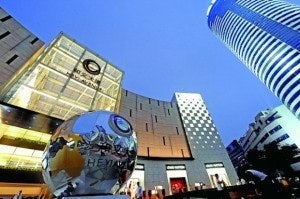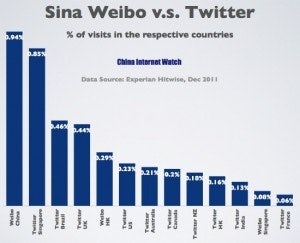95 Percent Of Chinese Living In First-, Second- And Third-Tier Cities Use Social Networking#

Facing more saturated retail environments and greater competition in China's largest and most developed metropolitan areas, ad agencies and brand marketers are pushing their way into lower-tier cities, looking to tap a gradually expanding customer base. A burgeoning middle class, pockets of massive wealth in areas enriched by coal and other natural resources, and pent-up consumer demand for items to which their peers in Beijing and Shanghai have long been accustomed, mean brands that move quickly to gain a stronger foothold in inland China could set themselves up for sustained sales in the years ahead. This is particularly true in the digital sector, where digital marketing is becoming a key influencer among consumers in first-, second- and third-tier China.
So what, to a marketer, separates "Tier One" and "Tier Two" China from the lower-tier cities? Generally, top-tier cities include Beijing, Shanghai, Guangzhou and Shenzhen, while second-tier cities include provincial capitals. (For more on tier-two China, see Jing Daily's "Second-Tier Spotlight" series.) From there, separating third- and fourth-tier cities is fairly inexact, but as AdAge notes this week, agencies and marketers generally go by average income and a city's development. (This complicates matters, however, as economic shifts can see a city jump from one tier to another from year to year.) Brands themselves can use their own classification systems, however, with Coca-Cola dividing Chinese cities into three categories and home-grown sportswear brand Anta using 10 tiers.
Considering their economic growth rates often exceed those of far more developed Shanghai and Beijing, lower-tier cities are becoming the new battleground for brands looking to get in front of an emerging, less knowledgeable consumer base. As T.B. Song, chairman of Ogilvy & Mather Greater China, told AdAge, we're entering an interesting time for brands in China, as international labels want to make themselves known to lower-tier consumers while local brands want to do the same in upper-tier cities. Said Song, "The major trend is that all the international brands want to go into third and fourth-tier cities. And all the local brands want to enter first and second-tier cities. This is a period of growth that really highlights the importance of regional marketing."
Via AdAge:
Ogilvy partnered with Nanjing Yindu Advertising Agency for six years before acquiring the shop last year to form Yindu Ogilvy. International agencies expand into lower-tier markets through acquisitions or opening their own satellite offices; the advantage of an acquisition is it comes with existing relationships with crucial local clients.
"Local clients really need local relationships. So if (the local agencies) have a stable relationship with the local clients, then we have a better chance of improving the services they can provide to them," Ogilvy's Mr. Song said.
Business in markets such as Nanjing is booming. One of Yindu Ogilvy's key clients is consumer-electronics retailer Suning, which reported profits up 20% in 2011 and plans to open 426 new stores this year, including two in Japan.
...
Other ad groups may not have as big a footprint in China as WPP, but all point to the importance of cities such as Chengdu (population 14 million), Wuhan (10 million), Shenyang (8 million), Nanjing (8 million) and Xiamen (3.5 million).
"Many people outside of the region don't realize that even China's lesser- known cities are major population centers. Ten years ago, China already had over 170 cities with populations of more than 1 million, and those numbers have grown during the last decade," said Serge Dumont, Omnicom Group vice chairman and head of Omnicom's Greater China business unit, in a statement to Ad Age. The holding company's 40-plus agencies in China operate in 30 cities.

Naturally, growing pains are involved as agencies turn to inland China. With marketing culture in lower-tier cities still in the earliest stages of development, agencies are finding that marketing, advertising and communications in general will take time to catch up to top-tier cities. This, according to Sabrina Lee, general manager of agency consulting at independent marketing consultancy R3, means patience is key. Said Lee,"All the holding groups are very eager to enter these tier-two cities but they haven't achieved a lot of results yet...They really want to go over there but they will run into some problems. So they're waiting to see if those markets will mature a little more or they are making adjustments to their own operating models."
